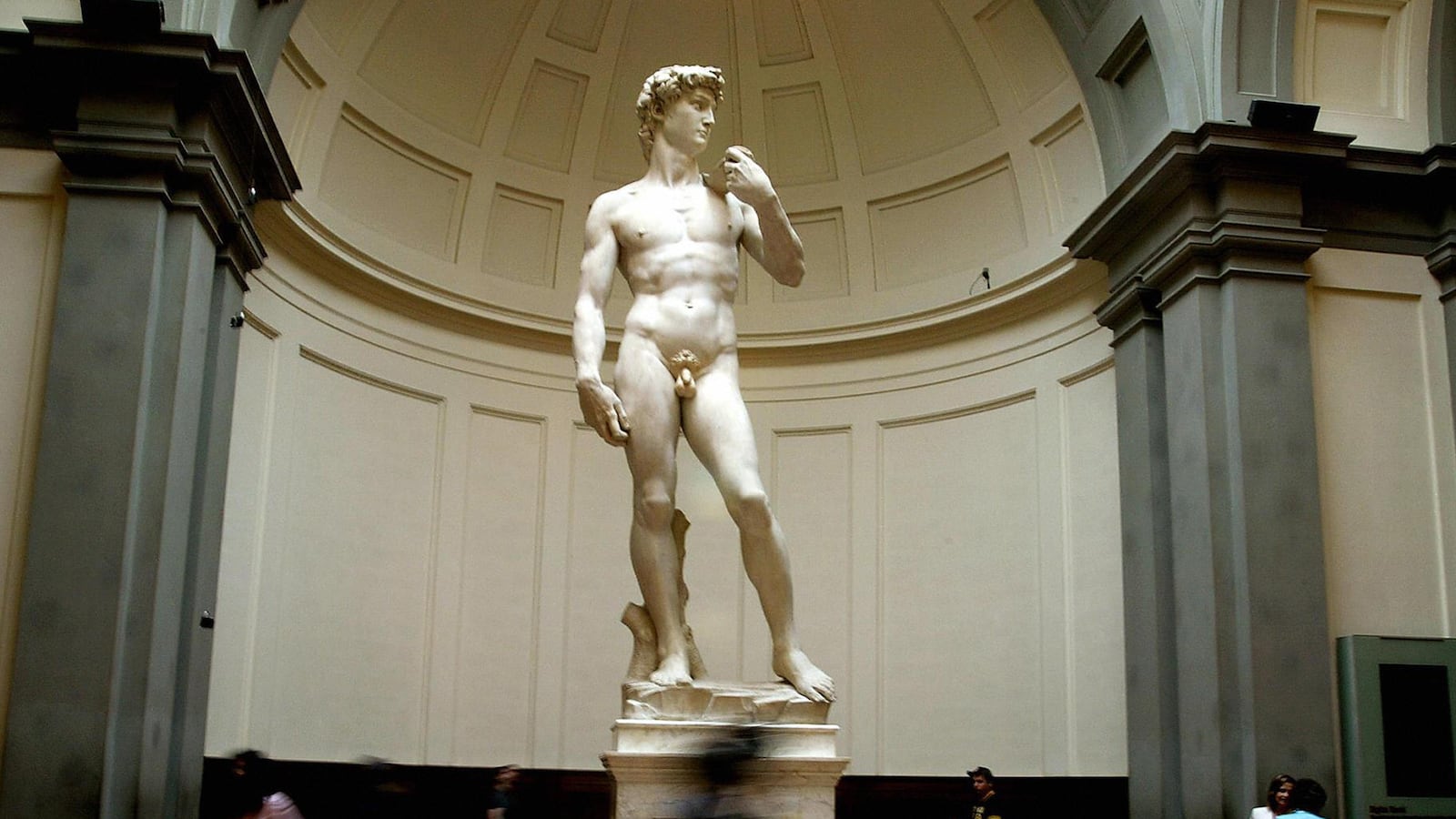ROME—When the earth started shaking around Florence and Siena, Italy, last weekend, Alessandra Marino thought about one thing: David’s delicate ankles.
Marino, the superintendent of culture in Florence, thought back to 2004 when experts warned that six-ton body of Michelangelo’s famous boy with a slingshot was resting on weak joints. The concern was revived last May when researchers discovered micro-fissures in David’s lower limbs, which had been patched erratically with simple plaster during previous restorations.
“At the moment there are no signs of damage,” Marino told The Daily Beast. “But with a stronger quake, we could have a serious problem.”
The Tuscan tremors—nearly 300 since last Friday—closed schools, sent people into the streets, closed museums and sent shockwaves through Italy’s heritage community.
Italian Culture Minister Dario Franceschini immediately pledged $250,000 for an anti-seismic pedestal to place under the statue of David, which should eliminate some of the risks caused by his weak ankles. Similar reinforced plinths were developed by the Getty museums in Los Angeles to absorb the seismic movements there. “The recent earthquakes make this project urgent,” Franceschini told reporters. “A masterpiece like David must not be open to any risk.”
Every year, more than 1.25 million people visit David at the Accademia Gallery in Florence, where the 500-year-old, 14-foot marble masterpiece sculpted by Michelangelo has been housed since it was moved from the city’s Piazza della Signoria in 1827 to protect it from the elements. Workers built a temporary rail track through the city to move the statue in a process that took three days. A replica statue now stands in the outdoor square.
Italian restoration expert Fernando De Simone warned that it’s not just David’s pedestal that needs to be fixed and David is not the only Florentine treasure that needs to be bolstered. He also warns that the entire Uffizi museum should be fortified with anti-seismic measures. “Considering both the Uffizi and the Accademia do not have real seismic structures, there is a real danger that Michelangelo’s David and other masterpieces might collapse in an earthquake,” he said. “No precautions have been taken to reinforce the ceilings, which could collapse onto the statues.”
According to a study of the statue conducted jointly by the National Research Council and Florence University, David could collapse even without a strong quake. The statue is made of flawed marble and it is standing at a 15-degree inclination, which could cause it to collapse under its own weight. So, efforts to reinforce David’s ankles are currently under study.
The tremors are particularly worrying to Italians who remember that in 2009 similar tremors in Abruzzo were followed by a major earthquake that killed 309 people and has left the city of L’Aquila a ghost town. In 1997, an earthquake in Assisi caused the collapse of the main cathedral and killed ten people.
Italy’s most recent major earthquake struck in 2012, when two quakes killed 17 people and caused millions of dollars worth of damage to the region of Emilia Romagna, where churches collapsed and many of the area’s parmesan cheese and balsamic vinegar factories were destroyed.






